Battle of Carthage State Historic Site
Introduction
Text-to-speech Audio
Images
The site sign
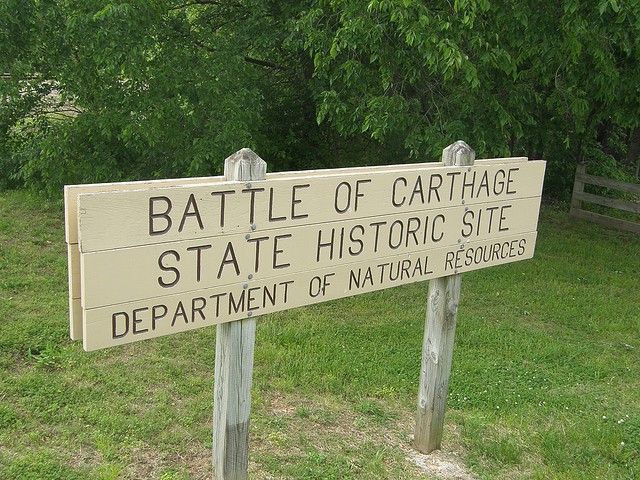
A spring is located at the site and has had several names over the years based on landowners - James Spring, Carter Spring.
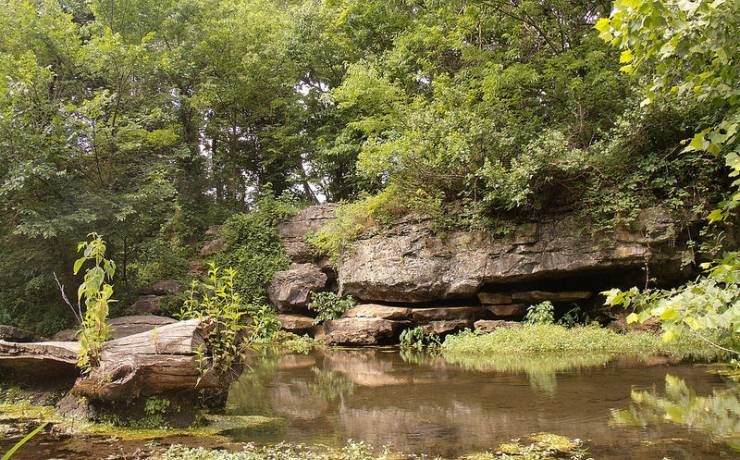
This shelter displays information about the battle
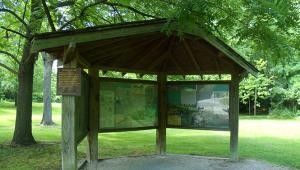
Entrance signage on East Chestnut Street just beyond Carter Park.
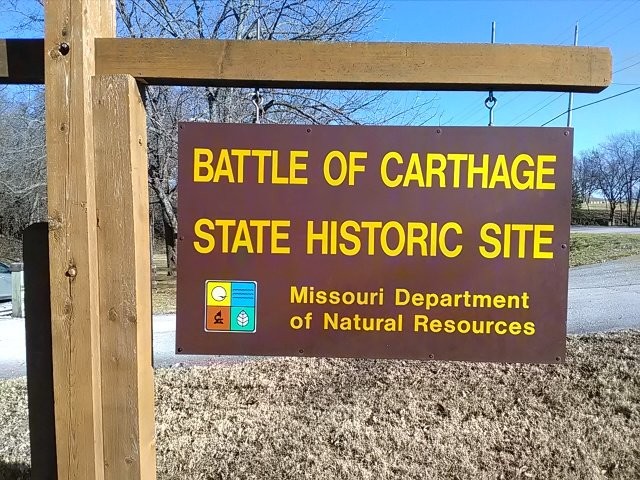
Exhibit kiosk at Battle of Carthage State Historic Site.
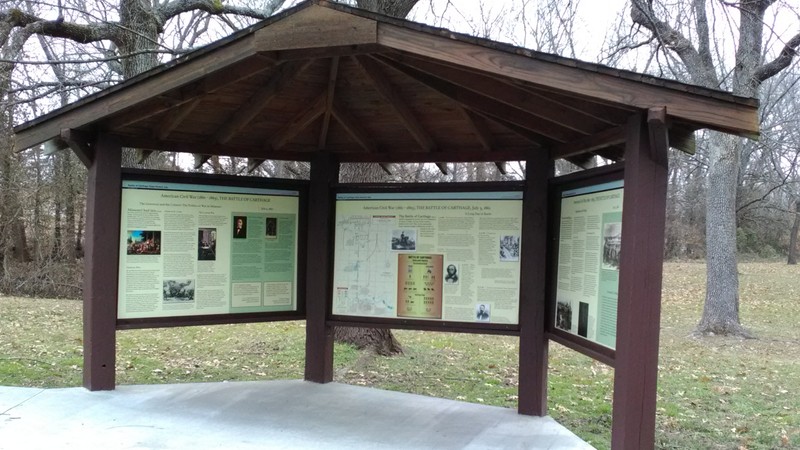
Signage from Battle of Carthage kiosk.
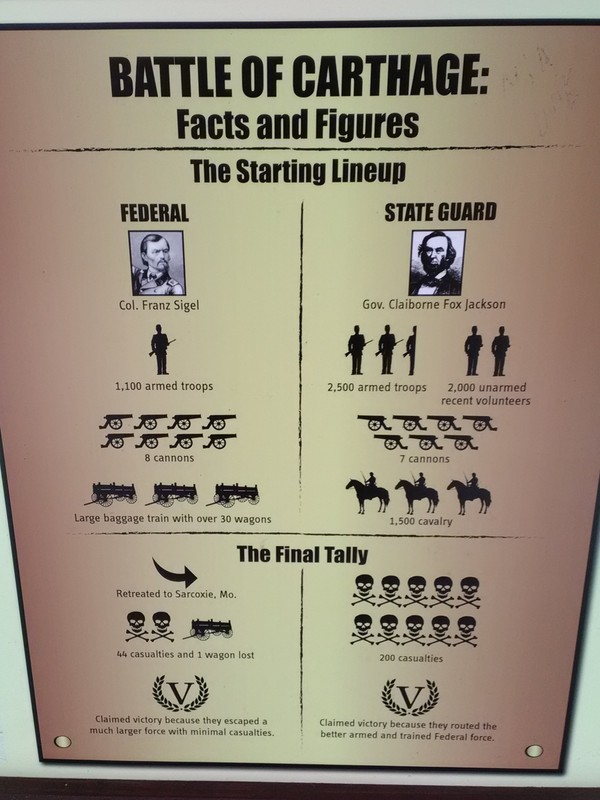
Text from Battle of Carthage kiosk.
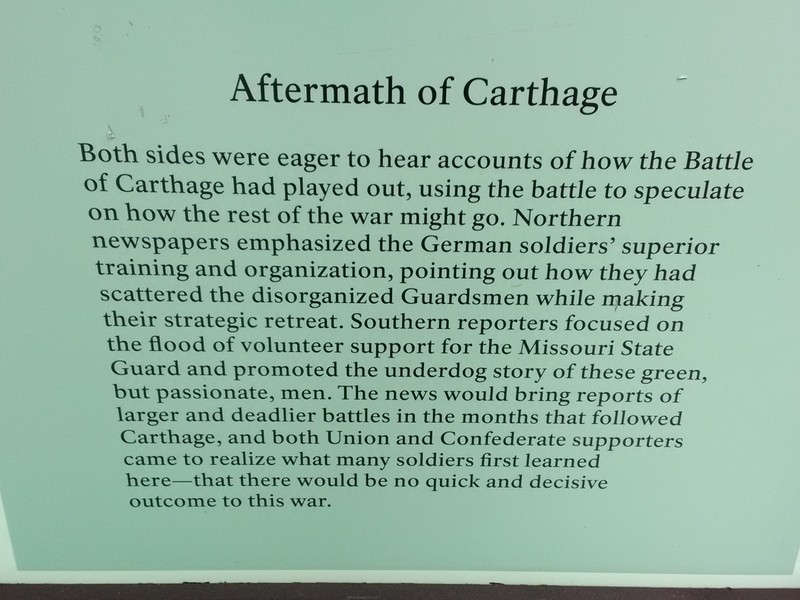
Postcard image of Carter Spring now part of the Battle of Carthage State Historic Site. Featured in temporary postcard display during 175th Anniversary of Carthage exhibit at Powers Museum in 2017.
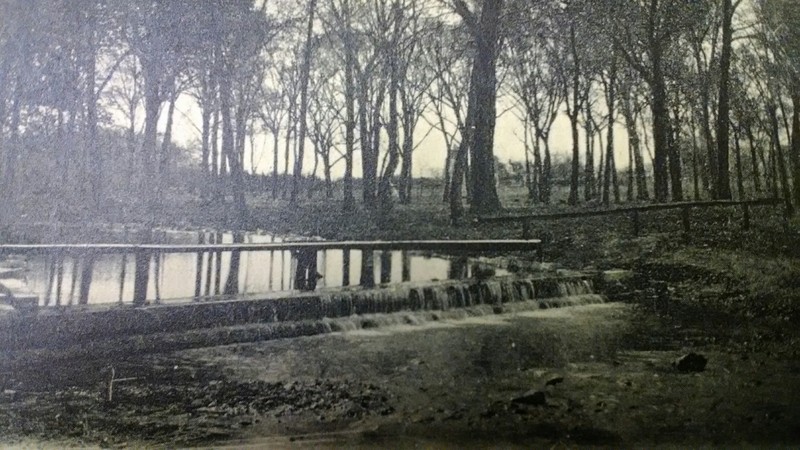
Digitization on CLIO is part of Powers Museum's "Digital Carthage" project in honor of Carthage's 175th Anniversary Celebration (March 28, 2017 through March 27, 2018).
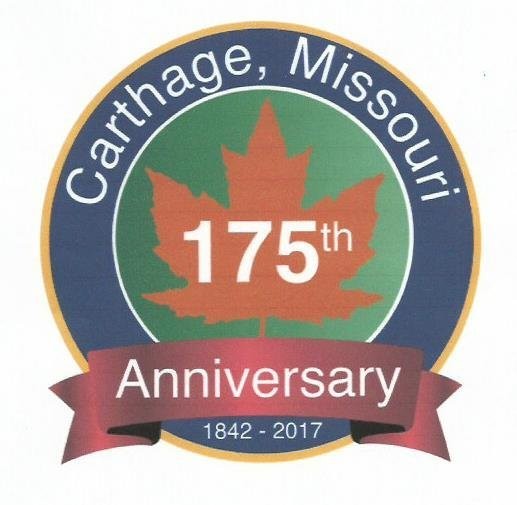
Funding for the Walking in the Wards tour was made possible by a grant from the Missouri Humanities Council and the National Endowment for the Humanities, Spring 2017.

Backstory and Context
Text-to-speech Audio
Prior to the battle, the men held a conference to settle the conflicts within the state. The conference abruptly ended, which did not sit very well with Price. He ordered that the railways were burned after crossing them. He continued his advance, building up his battalions: by July 3, he had collected 6,000 men from the south. Sigel made it to Carthage the next day. After hearing that Sigel was located at Carthage, the Governor planned an attack on the Union army.
The battle covered over ten miles at Carthage, but was pushed farther as Sigel tried to close off the attacks. The battle lasted all day and there was not any progress. The forces met in the town square of Carthage and had many skirmishes. Sigel soon found out about a large body of men moving back into the woods and he grew worried. The men were the unarmed guardsmen, but he believed he knew their tactics. Sigel retreated from the battle while having protective lines at the rear to protect the army from attacks while retreating. The army was able to retreat with little casualties. Sigel along with his troops went back almost 18 miles to Sarcoxie Michigan.
The Battle of Carthage was a win for the confederates, and was the determining factor of what Missouri's place in the war would be. Slavery in Missouri was abolished about 4 years later on January 11, 1865. The battlefield is now protected and preserved with 180 acres of land.
Sources
Dicks, B. “Battle of Carthage State Historic Site.” Missouri State Parks, October 10, 2012. https://mostateparks.com/park/battle-carthage-state-historic-site.
US, History. “Battle of Carthage - July 5, 1861.” American Battlefield Trust, July 17, 2018. https://www.battlefields.org/learn/maps/battle-carthage-july-5-1861.
———. “Sterling Price.” American Battlefield Trust, October 23, 2018. https://www.battlefields.org/learn/biographies/sterling-price.
Gossett, T. “Carthage.” Battle Summary: Carthage, MO, 2006. https://web.archive.org/web/20060907083451/http://www.cr.nps.gov/hps/abpp/battles/mo002.htm.
